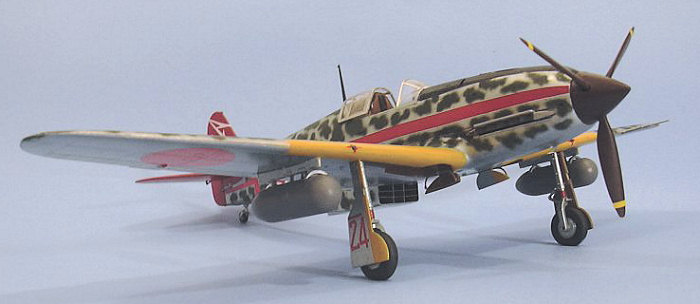
Hasegawa 1/32 Ki-61-I tei 'Hien'
| KIT: | Hasegawa 1/32 Ki-61-Itei 'Hien' |
| KIT #: | 08179 |
| PRICE: | $4200 yen at www.hlj.com |
| DECALS: | Two options |
| REVIEWER: | Tom Cleaver |
| NOTES: | Wolfpack productions conversion and Lifelike decals used |

| HISTORY |
The Japanese Army Air Force was extremely conservative in its view of what constituted a good fighter. As a result, when the JAAF entered the Pacific War, its main fighter was the obsolete (by Western standards) Nakajima Ki.27 (Nate), and its newest fighter - which only equipped one fighter Sentai - was the already-obsolescent Ki.43 Hayabusa (Oscar). While both fighters were highly-maneuverable and could give Western opponents fits, an Allied fighter pilot had only to keep his speed up and avoid high-G "dogfight" maneuvering in the horizontal plane to neutralize the good qualities of either fighter, with the Allied pilot able to break off combat at will through use of superior speed overall, and higher diving speeds. One good hit by the heavier firepower of the western fighter was usually enough to blow either of these fighters apart, due to their light construction and lack of armor.
The
first JAAF fighter that met Western standards to see combat in the Pacific War
was the Kawasaki Ki.61, known officially as the Type 3 Model 1 land-based
interceptor. The Japanese name was Hien - which translates as "Flying
Swallow" - while the Allied code name was "Tony." First encountered over New
Guinea in 1943, where it was initially thought by the Allies to be perhaps a
development of either the Messerschmitt Bf-109 or the Macchi C.202 (hence the
code name), the Ki.61 gave a good account of itself throughout the remainder of
the Pacific War. It was considered by its opponents to be one of the most
dangerous Japanese 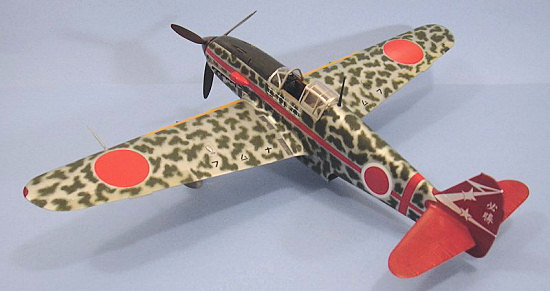 fighters,
and very difficult to shoot down.
fighters,
and very difficult to shoot down.
Kawasaki had acquired the manufacturing rights to the new series of Daimler-Benz aircraft engines in 1937, though it would not be until 1940 that the JAAF would take advantage of this fact. In February 1940, Kawasaki received development contracts for two fighter designs to be powered by the Daimler-Benz DB601A: the Ki.60 and Ki.61. Of the two, the Ki.60 was a very straightforward attempt to emulate European design standards, with the result being a "heavy" fighter with a top speed of 350 mph, which was the fastest of any JAAF aircraft to date when it first flew in March 1941 with a German DB601A engine. The Ki.60 was, however, ahead of its time so far as the JAAF was concerned, and further development was given over to the lighter, more "Japanese," Ki.61.
Kawasaki had simultaneously been working on the Ha.40, an indigenous development of the DB601A that was lighter than the original German engine, and rated at 1,175 h.p. Unfortunately, this lightness of design would ultimately be the downfall of the engine, because it could not stand up to prolonged operational use, in addition to being subject to poor quality control in production.
The Ha.40 powered the Ki.61 prototype which first flew in December, 1941. In early tests the aircraft achieved a top speed of 368 mph, though this would never be matched by production versions until the introduction of the higher-powered Ki.61-II in 1943. Twelve additional prototypes were built, and were flown in comparison with captured U.S. P-40Es from the Philippines and a German Bf-109E - the Ki.61 was superior to both.
The first production Ki.61 was powered by the production version of the Ha.40, the Type 2 Ha.60/22, rated at 1,100 hp and providing a top speed of 348 mph. The initial production version, the Model The Ki.61-Ia (Otsu), was armed with two 7.62mm machine guns in the fuselage, and two 12.7mm weapons in the wings.
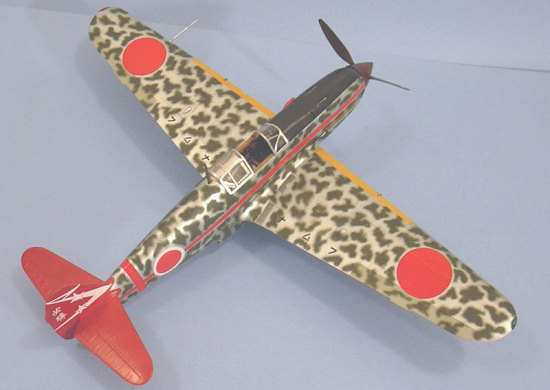 In August, 1943,
production switched to the Model 1b (Hei), in which the 12.7mm wing guns were
replaced by German 20mm MG 151 Mauser cannon. Only 800 of these weapons were
obtained from Germany, limiting production of the Model 1b to 400 aircraft. An
interim production version, the Model 1c (Koh), replaced the previous armament
with 4 12.7mm weapons in both the fuselage and wings. In January 1944,
production switched to the Model 1d (Tei), which substituted
domestically-designed Ho-5 20mm cannon for the wing armament, as well as having
two 20mm Ho-5s mounted in the fuselage, necessitating a 10-inch extension of
the forward fuselage to provide room for these weapons. All four versions could
be found operating in the same unit by 1944-45.
In August, 1943,
production switched to the Model 1b (Hei), in which the 12.7mm wing guns were
replaced by German 20mm MG 151 Mauser cannon. Only 800 of these weapons were
obtained from Germany, limiting production of the Model 1b to 400 aircraft. An
interim production version, the Model 1c (Koh), replaced the previous armament
with 4 12.7mm weapons in both the fuselage and wings. In January 1944,
production switched to the Model 1d (Tei), which substituted
domestically-designed Ho-5 20mm cannon for the wing armament, as well as having
two 20mm Ho-5s mounted in the fuselage, necessitating a 10-inch extension of
the forward fuselage to provide room for these weapons. All four versions could
be found operating in the same unit by 1944-45.
After fighting in New Guinea, the Ki.61 next appeared over Rabaul. This was followed by deployment to China, where it proved more than a match for the P-40s of the 23rd Fighter Group, which in turn led to expedited equipment of the 23rd FG with the P-51 Mustang in early 1944. The Ki.61 also equipped units based in the Philippines in 1944.
Allied fighter pilots respected the Ki.61, which provided better armor protection for the pilot and engine than other Japanese fighters, while providing excellent maneuverability and a diving speed that allowed it to keep up with any Allied fighter that attempted to disengage by diving.
The appearance of the B-29 in significant numbers over Japan, beginning in November 1944, led to the return of as many Ki.61-equipped units to the Home Islands as possible. In limited combat against the China-based B-29s in the summer of 1944, the Ki.61 had proven to be one of the few Japanese fighters capable of meeting the B-29 at altitudes over 30,000 feet. It equipped Japanese Taiatari (special attack) units, such as the 244th Sentai based outside Tokyo, since its design allowed for ramming attacks against B-29s that gave the pilot a good chance of a successful bailout just before impact.
Unfortunately for the Ki.61, the Ha.40 engine became an ever-increasing source
of trouble, varying greatly in rated power between specific engines due to poor
production quality control. The designed-in lightness of the engine led to
main-bearing failures and oil system faults. By the Spring of 1944, production
of the Ki.61 was lagging due to the fact that production of the Ha.40 had been
cut back in an attempt to restore production quality. Production of the engine
stalled out completely in the summer of 1944 due to a severe shortage of
cylinder blocks and crankcases. Further development of the Ki.61 in the Ki.61-II
and -III versions with a higher-powered development of the Ha.40 - the
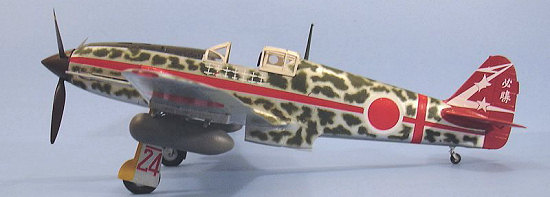 Ha.140 - were completely
unsuccessful due to the failure of the engine, though when the engine worked
properly the Ki.61-II was the only Japanese interceptor capable of maintaining
combat formation up to 33,000 feet.
Ha.140 - were completely
unsuccessful due to the failure of the engine, though when the engine worked
properly the Ki.61-II was the only Japanese interceptor capable of maintaining
combat formation up to 33,000 feet.
The best-known unit to operate the Ki.61-I-KAI was the aforementioned 244th Sentai. Based at Chofu, a suburb of Tokyo, their efforts were guaranteed heavy coverage in the national media. Led by Captain Teruhiko Kobayashi, the youngest Sentai commander in the J.A.A.F., the 244th became known to the 20th Air Force B-29 crews for their terrifying ramming attacks, and eventually was the top-scoring Japanese unit against the B-29s.
| THE KIT |
As I said in my review of the first release of this kit, the Ki.61 Hien is the best-looking Japanese fighter of the Pacific War, from a strictly-aesthetic point of view, with its narrow fuselage, pointed nose, and graceful wings. Tamiya produced a 1/50 Ki.61 in the late 1960s, but this suffered major fuselage outline irregularities due to the fact it was designed to take an electric motor inside, which additionally meant that interior cockpit detail was non-existant. Otaki released a Ki.61 in the early 1970s in 1/48 scale, which is accurate and can still be found, though it has a bit more recessed surface detail - in the form of rivets - than one might care for today, as well as a cockpit in need of detailing. Hasegawa first released a Ki.61 in 1/72 scale in 1974, which was the first accurate kit of this airplane released by any manufacturer, with very nice (for the time) cockpit detail. This kit is still in production nearly 35 years later, and can be safely recommended to any modeler who builds in the smaller scale.
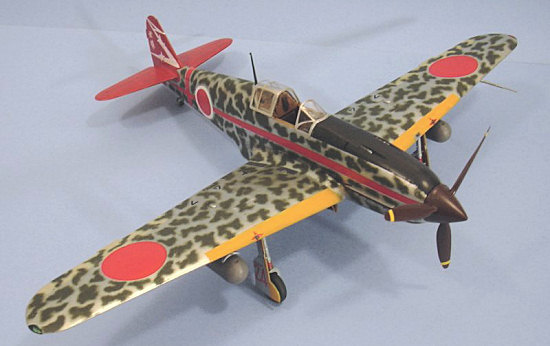 Hasegawa first released
the Ki.61 in 1/48 in 1994. There have been several limited releases of the kit
with various markings in the years since.
Hasegawa first released
the Ki.61 in 1/48 in 1994. There have been several limited releases of the kit
with various markings in the years since.
This new 1/32 kit is highly reminiscent of the earlier 1/48 kits. It is accurate, with thin trailing edges on all flying surfaces, and has a cockpit that is detailed sufficiently out of the box that most modelers will not feel an overpowering need for a resin replacement. For me, the one negative for all the earlier kits in smaller scales has been that the canopy is one-piece and cannot be displayed open without major surgery or replacement by a vacuform canopy. Fortunately, this kit provides the option of either a closed or open canopy.
Decals are the new style Hasegawa type, with white areas that really are, and with sufficient opacity to go over surface paint without markings like blotches showing through.
As one would expect, there are now aftermarket sets for this kit, which I used with this second limited released. Wolfpack Design (www.wolfpack-d.com) has released a Tei conversion set, WPD32001, which is a very nice set that includes an extended nose, detailed exhaust, 20mm Ho-5 cannon barrels and breeches, and rub-on decals for four aircraft. The conversion is the essence of simplicity, cutting off the kit nose along a panel line and replacing it with the resin part, which fits perfectly.
Additionally, Lifelike Decals in Japan (www16.ocn.ne.jp/~lifelike/) has released three decal sheets (32-003, 32-004, 32-005) “244th Sentai Best Collection”, which has four aircraft on each sheet, of which 7 of the total 12 aircraft are the “Tei”. The series is well-researched with excellent artwork and quality printing.
| CONSTRUCTION |
 Construction of this kit
is the essence of simplicity: follow the instructions and you will find no
problems to deal with.
Construction of this kit
is the essence of simplicity: follow the instructions and you will find no
problems to deal with.
The
only departure from the original kit was to cut the fuselage halves on the panel
line indicated in the Wolfpack Designs instructions.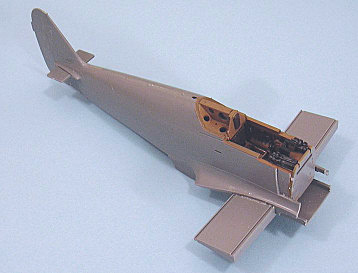
I then painted the cockpit with Xtracrylix RLM 79 “Sandy Brown,” which is considered a good match to Kawasaki Tan. I also used Eduard photoetch 1/32 JAAF seatbelts, which really add the final bit of accuracy to the already-good cockpit.
The
fuselage went together without problem. The kit is designed like the 109s, with
an internal spar sub assembly that
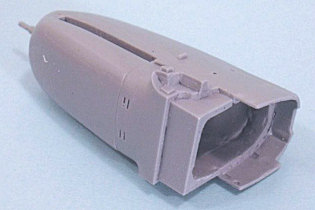 guarantees the wings will be
installed at the right angle. After the fuselage was assembled, I slid the nose
on and attached it with cyanoacrylate glue. The fit was perfect.
guarantees the wings will be
installed at the right angle. After the fuselage was assembled, I slid the nose
on and attached it with cyanoacrylate glue. The fit was perfect.
I then attached the wings and horizontal stabilizers and the model was ready for painting.
| COLORS & MARKINGS |
I
first applied a white undercoat to the tail and the wing leading edges. The
tail was were then painted with Tamiya Red with a bit of yellow mixed in to
brighten it like the decals, and the wings were painted yellow. I then painted
the ailerons with Tamiya “Japanese Army Grey” and the fuselage anti-glare panel
with Tamiya “NATO Black). These areas were then masked off.
I gave the model an overall thin coat of Tamiya “Flat Aluminum,” and then applied Talon “Platinum” overall. This was masked for various panels which were painted with Talon “Aluminum” and “Dark Aluminum”.
When this was all dry, I applied the markings for Major Kobayashi’s well-known Ki.61-I “Tei.” This airplane was flown in a variety of markings and camouflage, and it appears as three of the seven “Tei” variations on the decal sheets, in its various iterations. Lifelike has done their research here, contacting former 244th Sentai pilots and crew, and they demonstrate that the argument over whether the airplane was in red or blue markings depends on what time frame one is speaking of. I chose to do the airplane as it was seen in late April 1945.
One the decals were set, it was time to airbrush the green blotches around them, as was done on the real airplane. With the Tamiya “Japanese Army Green” thinned 50-50 with Tamiya thinner, I was able to do a very realistic recreation of the airplane.
When this was dry, I unmasked the model.
| FINAL CONSTRUCTION |
I attached the landing gear and the drop tanks and prop, and finished off by posing the canopy in the open position.
| CONCLUSIONS |
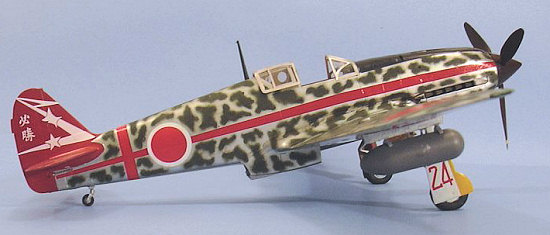 There are those who will
say the 244th Sentai has been “done to death,” and that Kobayashi’s
airplanes are the most overdone of the bunch. That’s probably true, but the 244th
was the unit that was where the media was and it got photographed more than the
others, which means it is the best-documented Ki.61 unit for markings
researchers. With the Lifelike Decals, one can do at least one of each of the
Ki.61 sub-types; other than the Kobayashi airplanes, they are the mounts of
other distinguished pilots of the unit.
There are those who will
say the 244th Sentai has been “done to death,” and that Kobayashi’s
airplanes are the most overdone of the bunch. That’s probably true, but the 244th
was the unit that was where the media was and it got photographed more than the
others, which means it is the best-documented Ki.61 unit for markings
researchers. With the Lifelike Decals, one can do at least one of each of the
Ki.61 sub-types; other than the Kobayashi airplanes, they are the mounts of
other distinguished pilots of the unit.
To me, the Tei is the best-looking version of this fighter, and the Wolfpack Designs conversion allows a modeler to create this with a minimum of difficulty. The basic kit is great, the aftermarket sets are very good indeed. Highly recommended for Japanese aircraft fans.
Thanks to HobbyLink Japan for the review kit. Get yours at “Japanese prices” at www.hlj.com
Thanks to Wolfpack Designs and Lifelike Decals for the aftermarket sets.
January 2008
If you would like your product reviewed fairly and quickly, please contact me or see other details in the Note to Contributors.